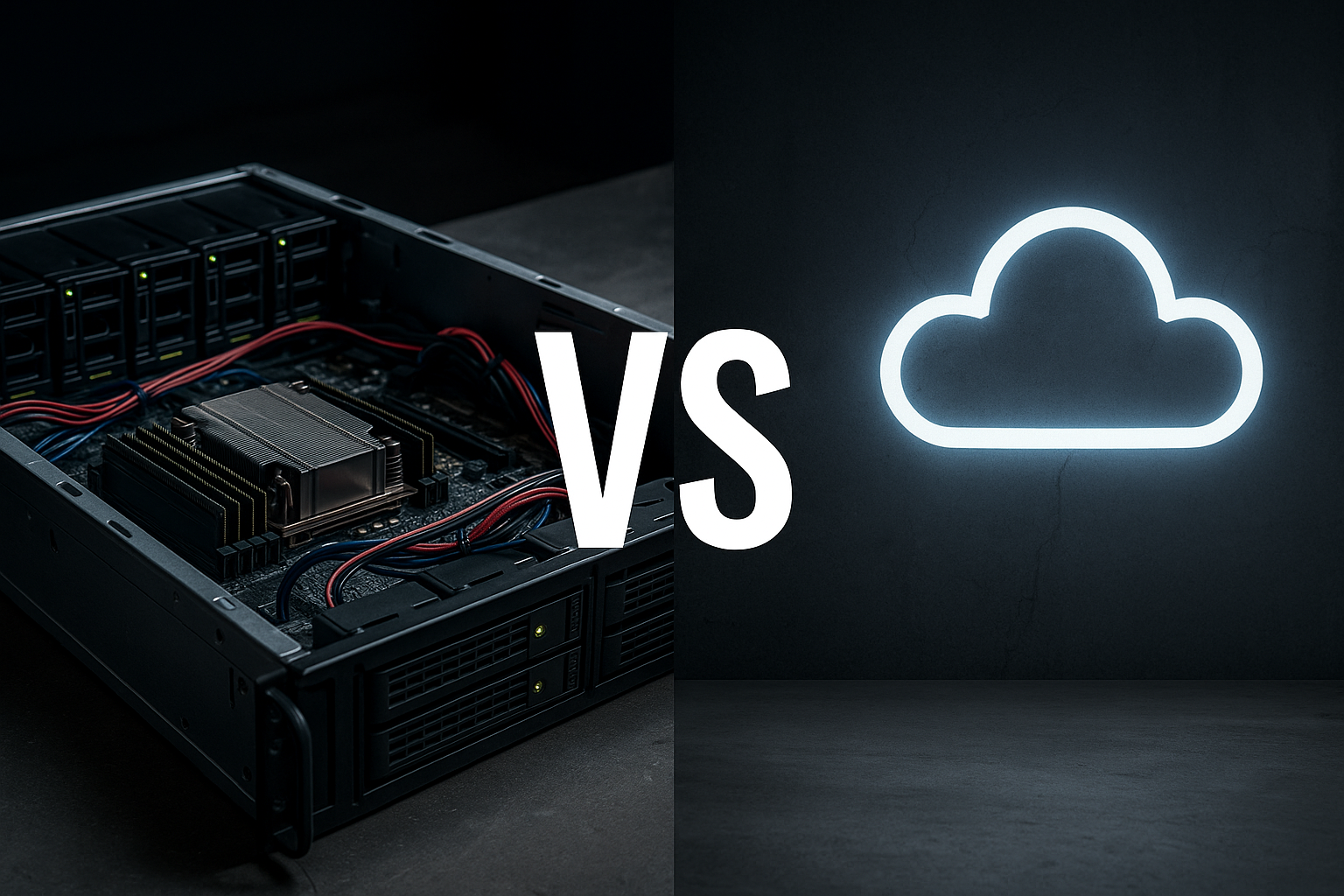
Behind the Uptime: Why We Don’t Believe in the “Cloud VPS Myth”
For years I’ve been telling clients something that often surprises them:
most “cloud” hosting is not actually faster than well-built bare metal hosting.
In fact, in many cases, it’s slower, less predictable and more fragile.
And every time I said it, people looked at me as if I was fighting progress or refusing to follow a trend.
But the truth is much simpler than that.
When you run hosting professionally for decades, you stop believing marketing and start trusting numbers.
And the numbers have always told a very different story.
Today, in this Behind the Uptime post, I want to share why we design our platform the way we do, and why it consistently outperforms the generic “cloud” solutions that everyone is told to choose.
The Cloud VPS Illusion
Let’s start with the word cloud.
It’s a great marketing word.
It sounds modern, magical, flexible, infinite — everything you’d want.
But in reality?
Most cloud VPS environments are nothing more than virtual machines on shared hardware, where:
- CPU is shared
- RAM is shared
- I/O is shared
- storage is often network-attached
- and performance depends on what your neighbors are doing
There’s nothing inherently wrong with this, but it’s far from the “limitless cloud” picture people imagine.
Even worse: many users don’t realise their VPS is fighting for resources with a lot of others on the same node.
When that happens, you get slowdowns, random stalls and inconsistent performance — especially on busy hours.
The Hidden Problem: Network Storage
This is the part most customers never see.
On many cloud platforms, your “SSD disk” isn’t a disk at all.
It’s a virtual block device connected through the network.
Your I/O travels through several layers before it even reaches the real storage.
To illustrate:
Your CMS wants to write a file → PHP → kernel → virtual driver → hypervisor → network → storage cluster → real disk → back again.
Compare that to local NVMe storage:
PHP → kernel → NVMe driver → disk.
Done.
The difference in latency is massive:
- Local NVMe: 0.02–0.1 ms
- Cloud network storage: 2–30 ms, sometimes even worse under load
If you run WordPress, Joomla, or any database-driven website, those extra milliseconds multiply fast.
People see “cloud” and expect HA
This is another common misunderstanding.
Customers assume that because something is “in the cloud”, if something fails the platform magically heals itself.
That is true only when the provider explicitly offers automatic failover and redundancy across multiple hosts.
Most providers do not do this.
They simply sell a VPS that lives on one node.
If that node goes down, your VPS goes down with it.
The word “cloud” doesn’t change physics.
What We Do Instead
Our approach at 040Hosting has always been grounded in one principle:
Real performance always wins over marketing buzzwords.
This is why our hosting is built on:
- local NVMe RAID storage (ultra-low latency)
- dedicated CPU and RAM per account (CloudLinux LVE)
- powerful bare metal servers with zero noisy neighbors
- predictable resource allocation
- stable I/O without network bottlenecks
- massive internal caching
- extremely low load averages
Every account gets guaranteed power.
Your website isn’t slowed down when someone else gets busy.
Your database doesn’t choke because of shared storage.
Your homepage doesn’t stutter during peak hours.
We choose what works — not what sounds trendy.
Why People Finally See the Difference
Many clients start on a cloud VPS because it feels like the safe, modern choice.
But eventually, they all run into the same issues:
- slow page loads at random times
- high I/O wait
- unpredictable CPU performance
- storage latency problems
- support brushing it off as “normal for cloud”
Then they move their sites to our platform…
and suddenly everything loads faster.
Their website becomes more responsive.
Their admin panel feels lighter.
Backups run quicker.
Database queries stop lagging.
Errors disappear.
Nothing magic happened.
They simply moved from shared virtualized storage to dedicated, optimized hardware.
The difference is measurable and real.
I’ve been saying this for years — and now the numbers speak for themselves
For a long time, people didn’t believe me.
But when you monitor hundreds of servers every day, watch I/O patterns, CPU steal time, hypervisor overhead and real load averages, you can’t unsee the truth.
Cloud hosting has its place.
Cloud hosting isn’t always the wrong choice — it simply fits different needs. If a client requires full root access, a custom kernel, special software stacks or services that must run outside the limits of shared hosting, then a cloud VPS can be the right solution. It offers flexibility for developers who need to install their own modules, run background services or test environments that don’t belong on a shared platform. But for normal websites, where performance, stability and low latency matter most, optimized bare metal almost always delivers better results.
A well-built bare metal server with local NVMe still beats almost every generic cloud VPS.
And that’s why we design our platform the way we do.
Not because it’s fashionable.
Not because it’s cheaper.
But because it works — every hour, every day, every year.

 This is the eight post in a new series called
This is the eight post in a new series called